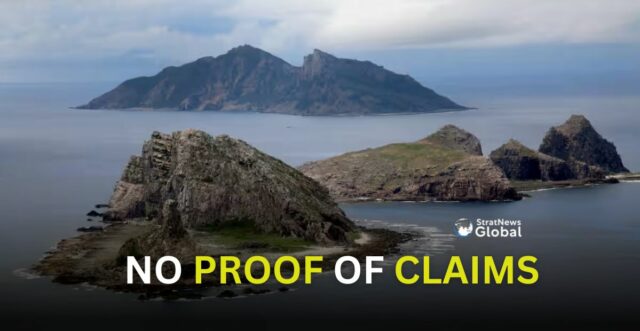Japan will soon display a set of historical Chinese documents that indicate China did not regard the Senkaku Islands as part of its territory in the past, according to Jiji Press. The exhibition, which will open on November 14 at the National Museum of Territory and Sovereignty in Tokyo, will show the parts of the documents, the agency reported.
The Documents
The three sets of documents, include a 1950 internal document from China’s Foreign Ministry prepared for peace treaty discussions with Japan, an 1889 report by a Qing dynasty official who visited Japan, and an 1895 record detailing the handover of Taiwan from the Qing government to Japan.
Notably, the 1950 document refers to the islands by their Japanese name ‘Senkaku,’ rather than the Chinese ‘Diaoyu,’ and classifies them as part of the Ryukyu chain, the present day Okinawa Prefecture.
The documents offer objective evidence that China did not consider the Senkaku Islands part of its territory prior to the 1970s. In 1968, the UN Economic and Social Commission for Asia and the Pacific (ESCAP) published a report on the rich oil and gas deposits under the East China Sea. Soon after, China began asserting its claims over the area, marking a significant shift in its territorial stance.
The report suggests that the 1895 Taiwan-related materials will be made public for the first time, while the other two have previously featured in Japanese educational resources.
The Rising Tensions
The exhibition comes amid rising tensions between the two Asian powers. Chinese coast guard vessels have frequently entered waters near the Senkakus in recent months, prompting Japanese protests and diplomatic warnings. Tokyo hopes the display will reinforce its position that “there exists no territorial dispute” over the islets, which it administers as part of Okinawa.
China, however, maintains that the islands have been part of its territory “since ancient times.” The Chinese Foreign Ministry has repeatedly accused Japan of “distorting historical facts” to justify what it sees as an illegal occupation.
By highlighting archival records from China itself, Japan aims to bolster international understanding of its claim and counter Beijing’s growing assertiveness in the East China Sea. As regional tensions rise, the exhibition underscores how even century-old documents continue to shape the geopolitics of Asia’s contested waters.





